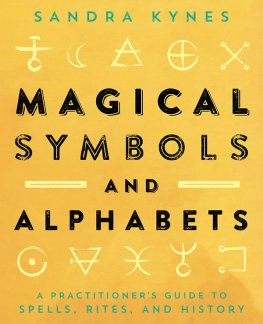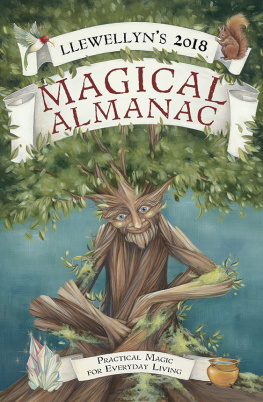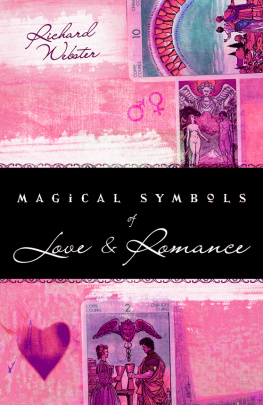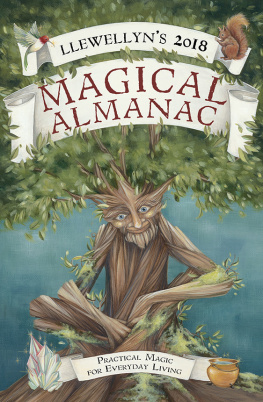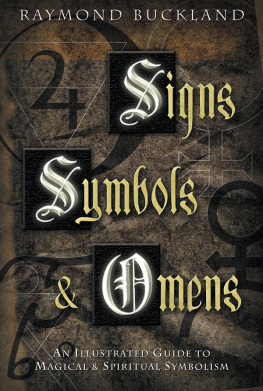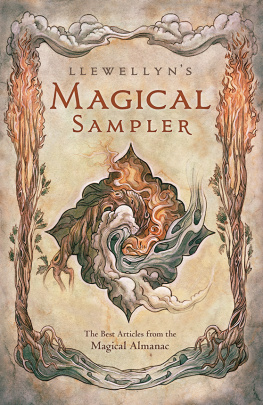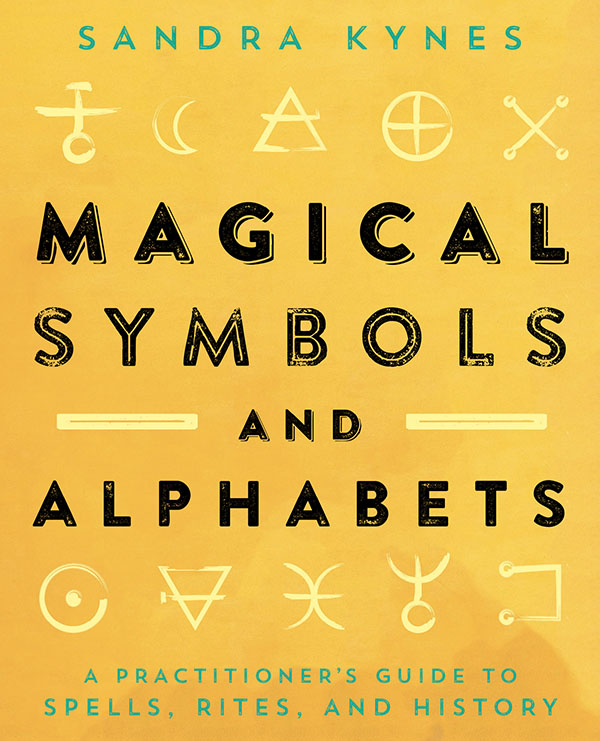About the Author
Sandra Kynes is a yoga instructor and Reiki practitioner, and a member of the Bards, Ovates, and Druids. She likes developing creative ways to explore the world and integrating them with her spiritual path, which serves as the basis for her books. She has lived in New York City, Europe, England, and now coastal New England where she lives in a Victorian-era house with her family, cats, and a couple of ghosts. She loves connecting with nature through gardening, hiking, bird watching, and ocean kayaking. Visit her website at www.kynes.net.
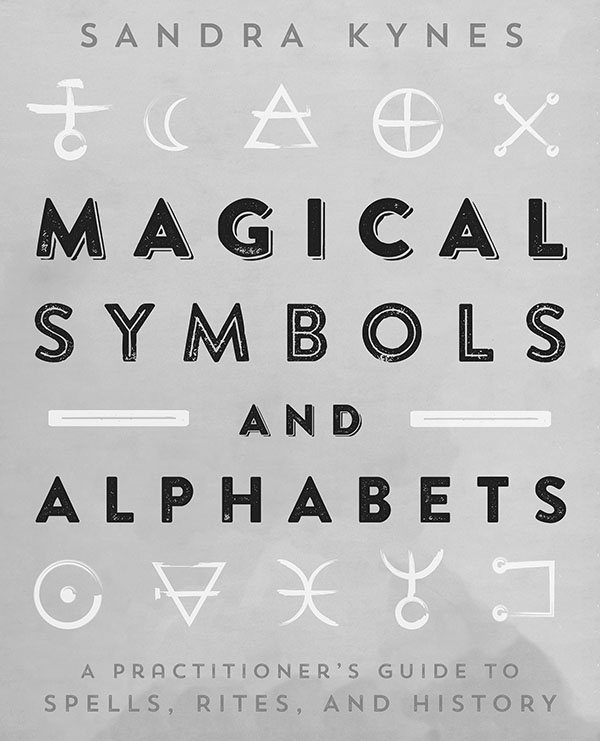
Llewellyn Publications
Woodbury, Minnesota
Copyright Information
Magical Symbols and Alphabets: A Practitioners Guide to Spells, Rites, and History 2020 by Sandra Kynes.
All rights reserved. No part of this book may be used or reproduced in any matter whatsoever, including Internet usage, without written permission from Llewellyn Publications, except in the form of brief quotations embodied in critical articles and reviews.
As the purchaser of this e-book, you are granted the non-exclusive, non-transferable right to access and read the text of this e-book on screen. The text may not be otherwise reproduced, transmitted, downloaded, or recorded on any other storage device in any form or by any means.
Any unauthorized usage of the text without express written permission of the publisher is a violation of the authors copyright and is illegal and punishable by law.
First e-book edition 2020
E-book ISBN: 9780738762005
Book design by Donna Burch-Brown
Cover design by Kevin Brown
Editing by Patti Frazee
Interior art by Laura Tempest Zakroff
Llewellyn Publications is an imprint of Llewellyn Worldwide Ltd.
Library of Congress Cataloging-in-Publication Data (Pending)
ISBN: 978-0-7387-6192-3
Llewellyn Publications does not participate in, endorse, or have any authority or responsibility concerning private business arrangements between our authors and the public.
Any Internet references contained in this work are current at publication time, but the publisher cannot guarantee that a specific reference will continue or be maintained. Please refer to the publishers website for links to current author websites.
Llewellyn Publications
Llewellyn Worldwide Ltd.
2143 Wooddale Drive
Woodbury, MN 55125
www.llewellyn.com
Manufactured in the United States of America
Contents
: ASTROLOGICAL SYMBOLS
Chapter 1:
Chapter 2:
Chapter 3:
: THE ELEMENTS
Chapter 4:
Chapter 5:
Chapter 6:
: THE FIFTEEN FIXED STARS
Chapter 7:
Chapter 8:
: THE OGHAM
Chapter 9:
Chapter 10:
Chapter 11:
Chapter 12:
: THE RUNES
Chapter 13:
Chapter 14:
Chapter 15:
Chapter 16:
: SIGILS
Chapter 17:
Chapter 18:
Chapter 19:
Chapter 20:
: THE WITCHES ALPHABET AND OTHER MAGICAL SCRIPTS
Chapter 21:
Chapter 22:
Chapter 23:
Introduction
Although we may not be aware of them, symbols are an integral part of daily life in the form of road signs, laundering instructions, mathematical functions, and of course, emojis. While these symbols communicate information, they do not hold a great deal of significance. However, in art, myth, religion, and magic we find symbols that convey deep meaning and provide guidance.
Throughout time, people have used symbols to explain unusual events, the natural world, and the mystical Divine. Symbols wereand still areused to express abstract ideas. Although the use of symbols found in Lascaux Cave in France and Altamira Cave in Spain date to approximately 30,000 BCE, more recent discoveries in Africa are pushing it back even further to around 70,000 BCE. It seems as though we are hard-wired for using symbols.
Having dedicated her life to studying the Neolithic and Bronze Age cultures of Europe, scholar and archeologist Marija Gimbutas (19211994) considered many of these ancient symbols as an alphabet of the metaphysical. Conveying information with symbols was especially important before written language and in later times when most of the population was illiterate. Symbols were easy to understand and served as simple abbreviations for concepts. They also served to veil information from the uninitiated.
Swiss psychologist Carl Jung (18751961) wrote about the deep significance of symbols and the fact that we tend to be drawn to them because somewhere within our psyches we are aware of their importance. Since most symbols are multilayeredoperating on the emotional, intellectual, and spiritual levelsthey awaken a response within us. Mythologist, writer, and lecturer Joseph Campbell (19041987) noted that symbols help us to identify with the symbolized force. According to Campbell, a symbol provides a means to access the reality of the symbolized concept and in some ways to join with or embody it.
From the Greek symbolon , the word symbol has had a variety of meanings, one of which relates to the principle of complementation. In magical systems, symbols do both; they make information accessible but can also camouflage it. For example, the ogham or runes can look like simple line designs, but to the initiated who can discern the characters, they hold a wealth of information.
While some of the symbols explored here are used more widely than others, they all offer unique approaches for bringing magic into our lives. This book serves as an introduction to various systems of symbols and alphabets and enables you to begin using them in your own practices. For those already using some of them, it may provide more information to better understand their context, history, and relevance. Also included is information and suggestions for magical, ritual, and mundane use that is meaningful to twenty-first-century Pagans and Wiccans.
Intended to inform and inspire, this book serves as a foundation upon which you can continue to build knowledge. Because most of the systems included are more extensive than space allows, you may want to further your study. Whether or not you pursue any of the systems more deeply, this book will serve as a convenient reference for years to come.
Each section covers a separate system, beginning with the astrological symbols. While they are most often equated with high or ceremonial magic and, of course, astrology, the purpose of this section is to acquaint you with a more Pagan/Wiccan-centric application. The second section explores the elements, which are often just a cursory component of ritual and magic. We will see how expansive the underlying concept of the elements is and how we can fully access their power. Although related to astrological symbols, the third section explores the fixed stars. This is a special group of fifteen stars that have been regarded as particularly potent for magic since ancient times.
Sections four and five examine the ogham and runes, respectively. While the exact origins of these systems may be lost in the proverbial mists of time, these sections follow their circuitous histories, separate fact from fantasy, and present realistic and meaningful suggestions for their use. Section six explores sigils and their development from magic squares to the word method for creating them. It also presents several new approaches to creating these unique symbols. Finally, section seven looks at magical alphabets with a special focus on the one known as the witches alphabet.

